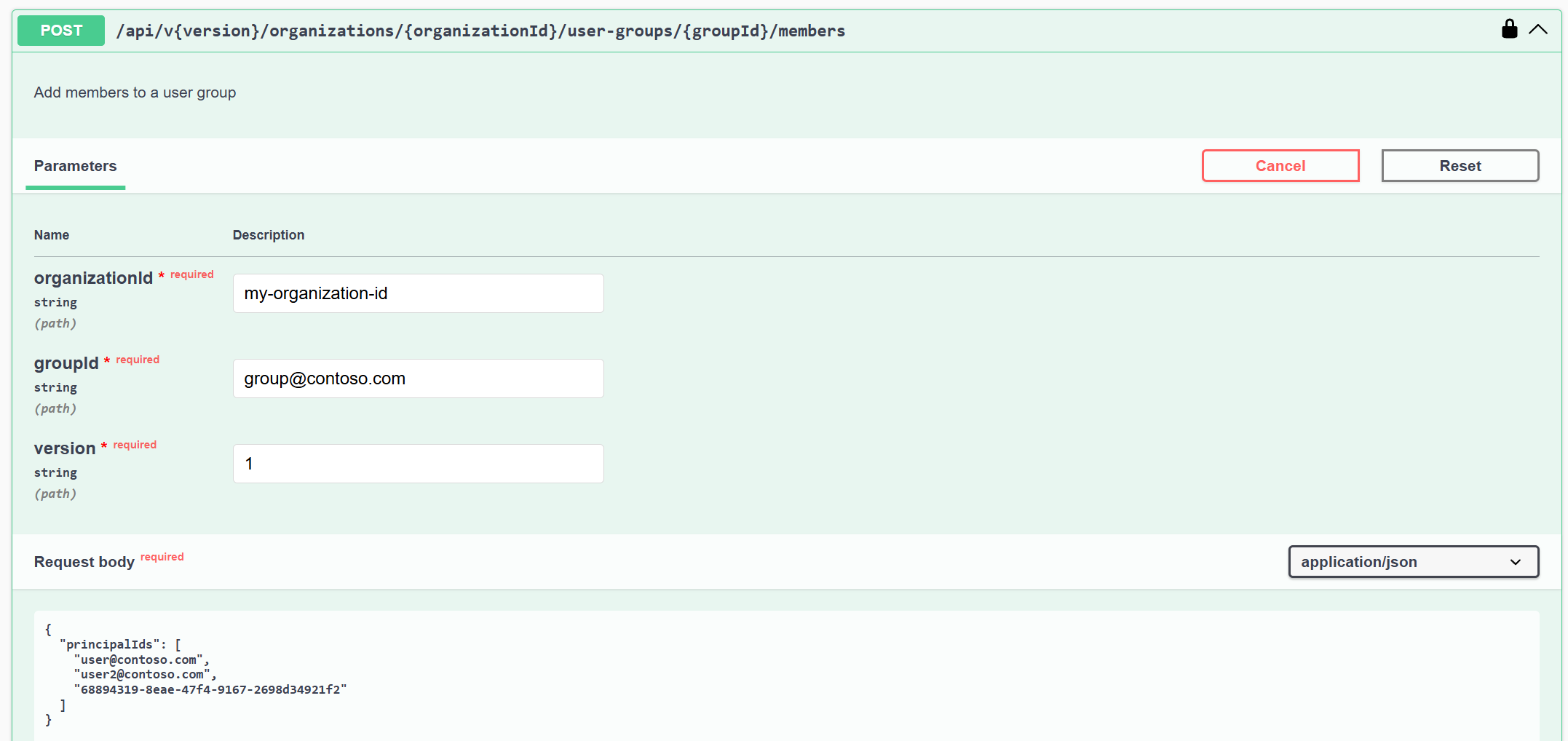twinsphere Management API
The Management API enables secure automation of core RBAC, identity, tenant, user, and service account operations within an organization. This API is designed for two audiences:
- twinsphere administrators who use the in-browser UI to manage their organization
- engineering teams integrating twinsphere capabilities into internal platforms, provisioning workflows or infrastructure automation pipelines
Getting Started
Important endpoints:
- the API itself is available under: https://manage.twinsphere.io/api ⧉
- OpenAPI specification: https://manage.twinsphere.io/openapi/v1.json ⧉
- Swagger UI (browser-based): https://manage.twinsphere.io/swagger/index.html ⧉
For each API request you need:
- the API version (currently only
v1: https://manage.twinsphere.io/api/v1 ⧉) - an authenticated principal (user or service account)
- your organization ID
Initially, each organization has a single user with rights to invite other users and create service accounts.
Self check via /me endpoint
To check your currently assigned organizations, tenants and roles simply use the /me endpoint.
Features
The Management API currently allows:
- user management within an organization
- service account management (including secrets)
- organizing users and service accounts via user groups
- RBAC at organization and cloud (per cloud tenant) levels
- on users and service accounts
- on user groups
Authentication
- Open the Management API Swagger UI in your browser: https://manage.twinsphere.io/swagger/index.html ⧉
- Use the Authorize (green) button on the right
- Choose one of the available authentication methods:
- Bearer: paste an existing bearer token (useful when testing service accounts)
- OAuth2: authenticate using your twinsphere ID account
You can also call the API with any HTTP client (e.g., curl). Using the Swagger UI is optional.
Inviting users
You can invite any user to your organization using their twinsphere ID. If the user does not yet have one, please submit a support ticket.
Note
User self-registration in twinsphere ID is coming soon.
To invite a user, use: POST /api/v{version}/organizations/{organizationId}/users/invite
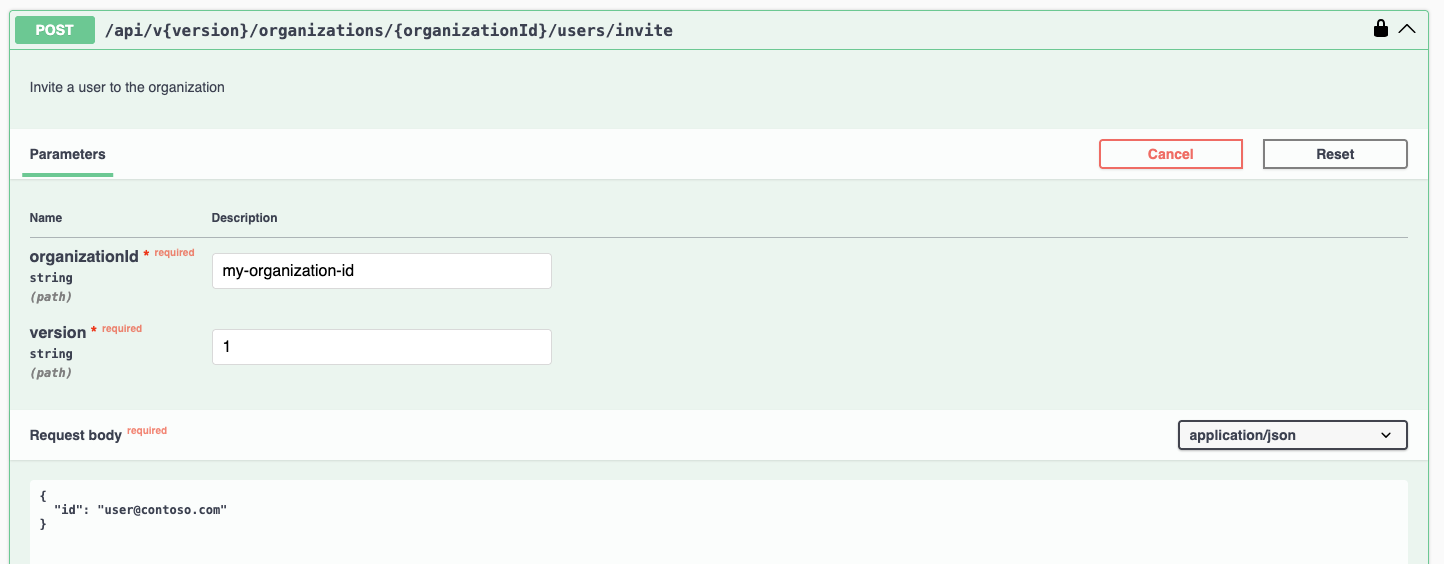
Role-based access control (RBAC)
For any organization member (user) or any service account you created, you can create role assignments to define their access. Roles can be assigned at:
- organization (global) level
- cloud level (per cloud tenant)
Organization-level roles implicitly grant access to all cloud tenants and should be limited to administrators or super-users.
List available roles:
GET /api/v{version}/organizations/{organizationId}/rolesGET /api/v{version}/organizations/{organizationId}/cloud/roles
Assign the organization-owner role:
POST /api/v{version}/organizations/{organizationId}/role-assignments
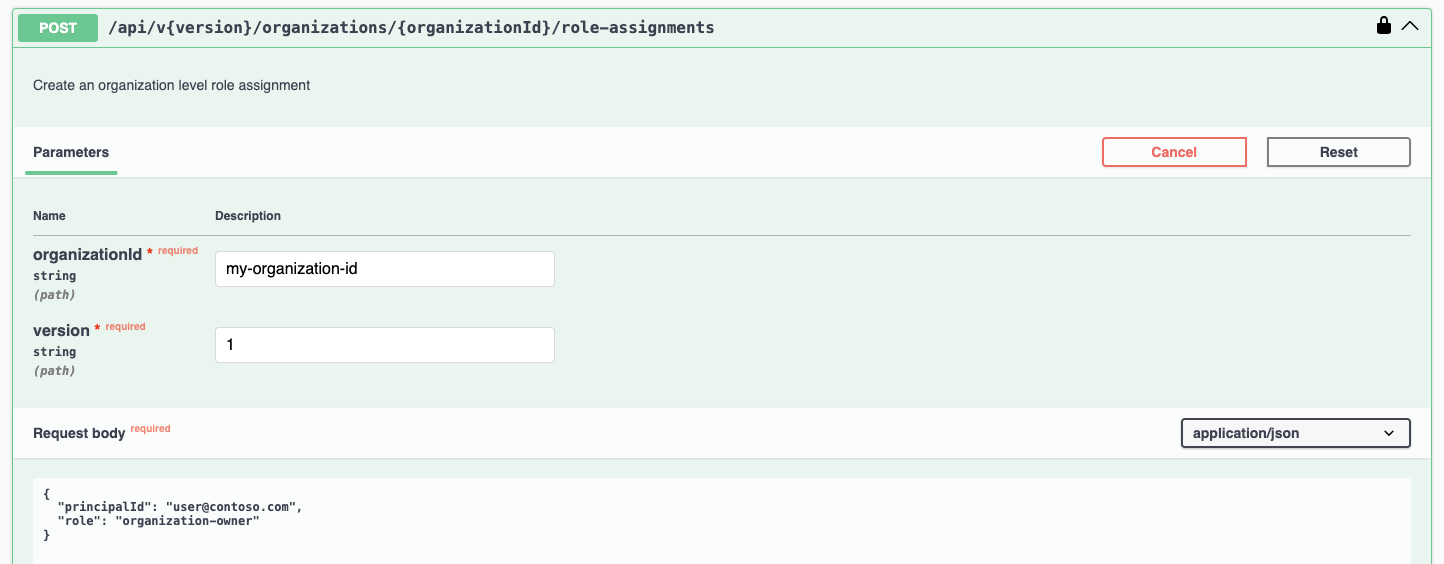
Assign a role for a single cloud tenant (e.g., read-only AAS data):
POST /api/v{version}/organizations/{organizationId}/cloud/{tenantId}/role-assignments
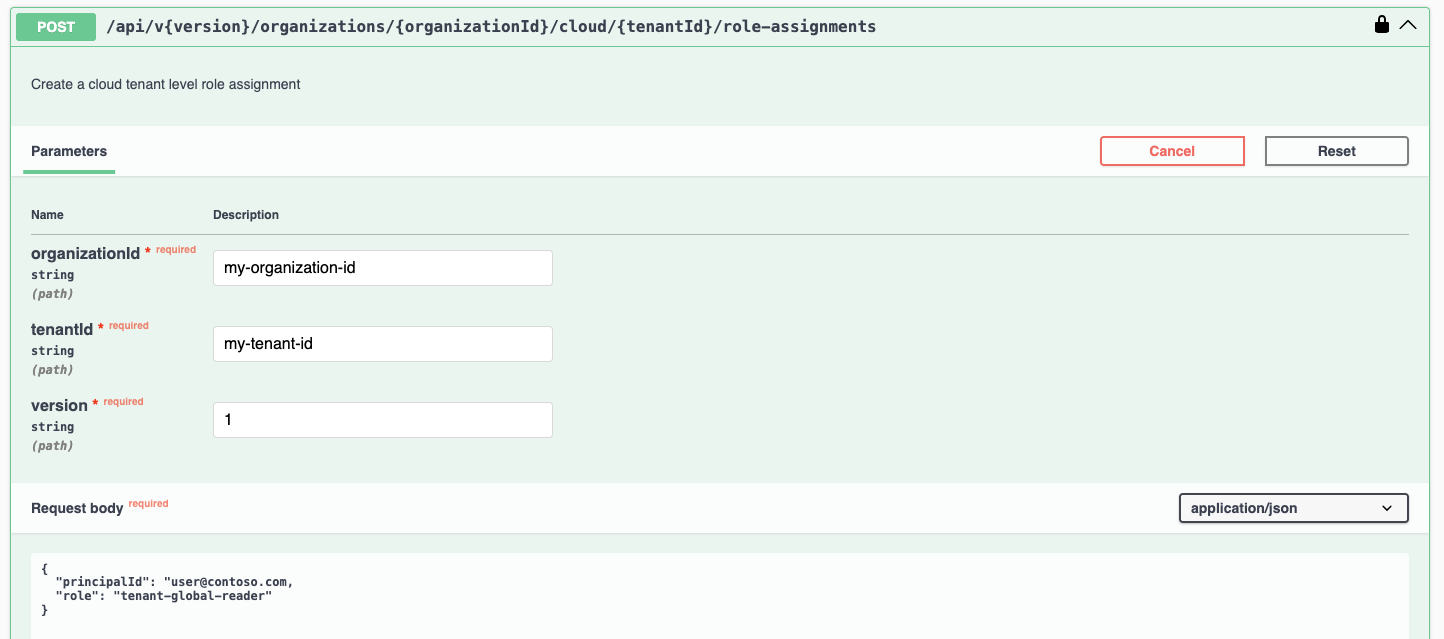
Service accounts
Service accounts provide headless (machine-to-machine) access.
Create a service account:
POST /api/v{version}/organizations/{organizationId}/service-accounts
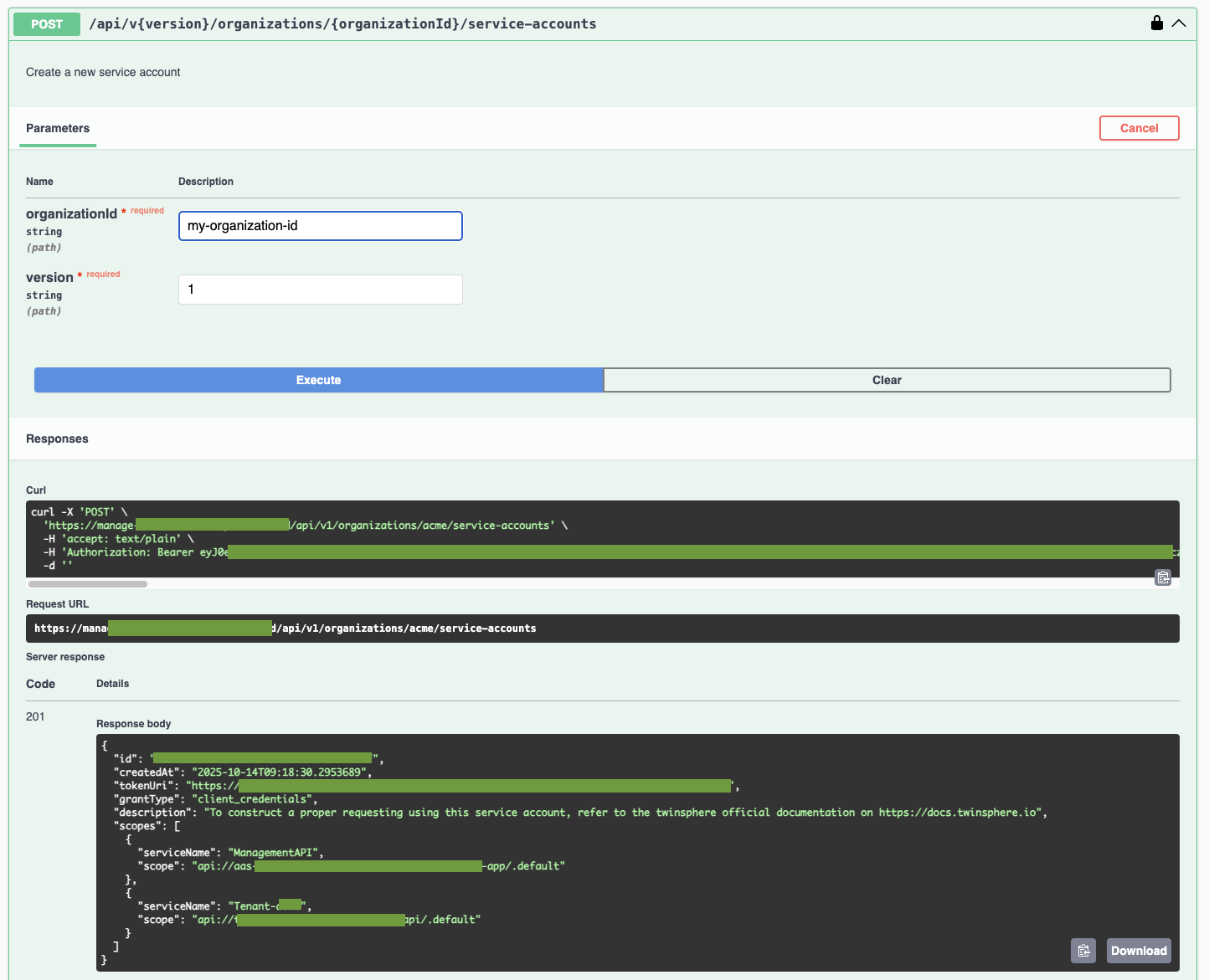
Add a secret to a service account:
POST /api/v{version}/organizations/{organizationId}/service-accounts/{serviceAccountId}/secrets
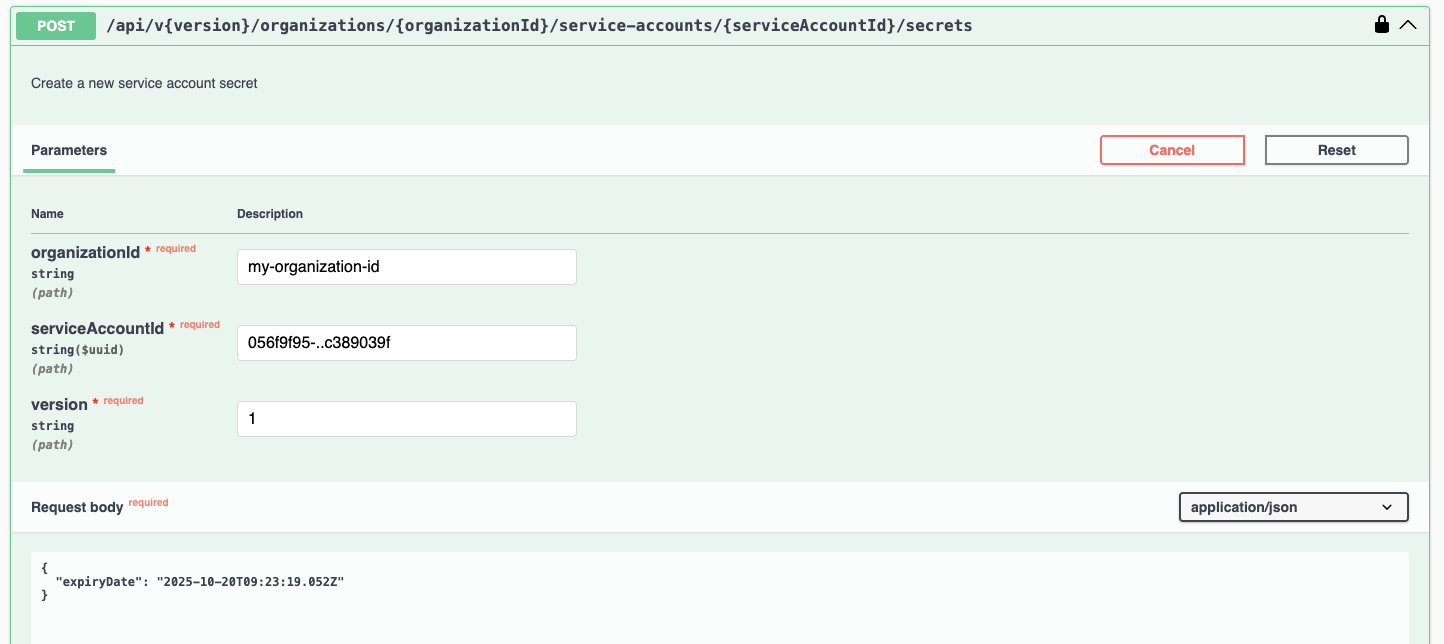
Important
The secret value is shown only once at creation time. Store it securely immediately; you cannot retrieve it again later.
More about authentication
To learn more about authentication flows, consult the detailed guide in cloud-auth.md.
User groups
User groups provide an easier way to assign roles to multiple users or service accounts at once.
Create a user group:
POST /api/v{version}/organizations/{organizationId}/user-groups
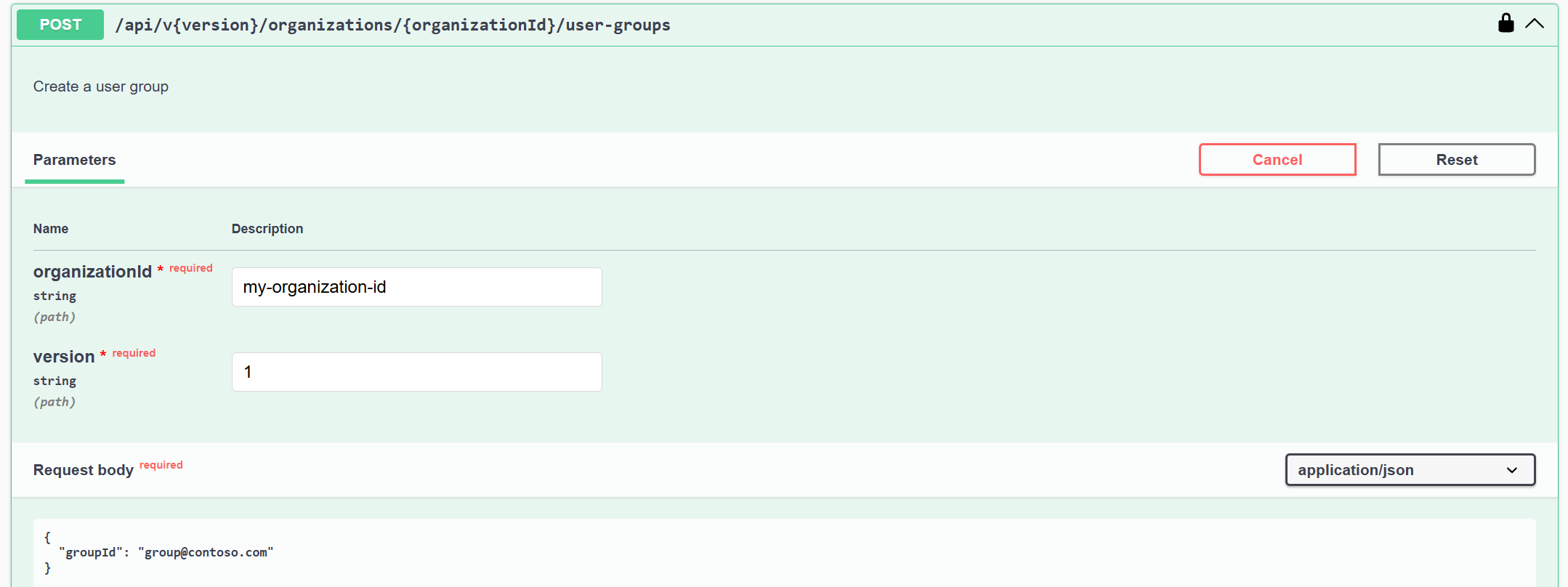
Add members to a user group:
POST /api/v{version}/organizations/{organizationId}/user-groups/{groupId}/members
